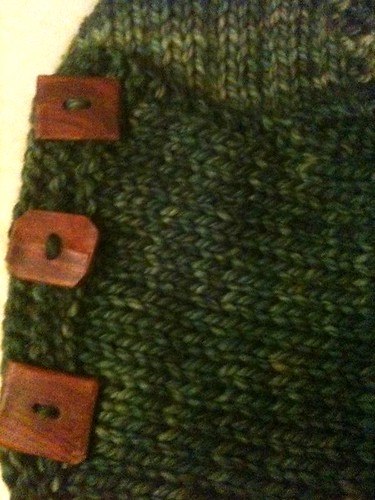Wednesday, December 08, 2010
Cowl
Saturday, November 13, 2010
Plying is a new experience!
Tuesday, November 09, 2010
The Gathering
I also had the pleasure of meeting Sara Lamb in her workshop Braids and Bands on the Inkleloom. I need much more practice learning the pick up technique on the inkleloom, but it will be worth the effort.
Of course, I added another spindle to my repetoire, A spindle with interchangeable shafts to enable me to spin 2 or 3 cops and them ply directly from them. This is a Ken Ledbetter spindle that Ball and Skein is selling.
Monday, October 18, 2010
Spindling Done

Saturday, October 02, 2010
Bhakti
She gave us a copy of one of Rumi's poems called The Guest House which addresses the yin and yang of life.



Wednesday, September 01, 2010
Citron at Point Judith
Friday, July 30, 2010
Monday, July 26, 2010
Spinning Weekend

Carol M won the wheel spinning contest for the longest yarn! Congrats,Carol! I was lucky enough to win the spindle contest for the longest yarn.
I was also pleased about this:

Wednesday, July 21, 2010
Wednesday Eye Candy
Sunday, July 11, 2010
The Value of Handwork
Thursday, July 08, 2010
Tibetan Spindle
Friday, July 02, 2010
Yin and Yang
has its highs and lows. Today I had the fearful task of removing poison ivy from the backyard. Armed with several clipping devices and dressed to the teeth in old clothing that covers the entire body I began clipping away. No. I didn't get all of it....I never do, but I got enough to satisfy me.
On to the joy......




Sunday, June 20, 2010
Today's Knitting
Thursday, June 17, 2010
Strawberry Pickin'
Saturday, June 05, 2010
Saturday, May 22, 2010
Catching Up

 For more reasons than you'd like to hear I've been busy with work and more. My garden has been delighting me more and more each day. I'm totally in love with my Snow in Summer!!! I've finally found a place it loves in my front yarn. It has repaid me with a stunning production of flowers. Also my Amsonia is in full bloom with her pale blue flowers. But is she ever tough to dig out. Beware the star plant's tenacious root system. I was able to dig out some small sections to pass along to other perennial lovers.
For more reasons than you'd like to hear I've been busy with work and more. My garden has been delighting me more and more each day. I'm totally in love with my Snow in Summer!!! I've finally found a place it loves in my front yarn. It has repaid me with a stunning production of flowers. Also my Amsonia is in full bloom with her pale blue flowers. But is she ever tough to dig out. Beware the star plant's tenacious root system. I was able to dig out some small sections to pass along to other perennial lovers.Sunday, May 16, 2010
Painting Tote or Knitting Tote
Friday, May 14, 2010
Sunday, April 18, 2010
UFO Resurrection
Friday, April 02, 2010
Tuesday, March 30, 2010
Sunday, March 28, 2010
C'est Fini ! Swan Lake Stole
Thank you Pink Lemon Twist for this KAL! Thank you, Iris for starting this project with me while we read our charts on music stands in your backyard. You were also there at the finish line. I knitted the stole with Jaggerspun Zepher Wool-Silk 2/28 in Indigo. I purchased two balls ( 630 yds each) from Sarah's yarns. I actually used 1 and a half balls or 3 oz of the yarn.


Thursday, March 25, 2010
Hula Hoop Knitting
 Last Sunday was a fine day for the outdoor sport of knitting.I worked industriously on my Lace Ribbon Scarf made of some hand spun alpaca, silk and angelina. Several RI Spinning Guild members hit Oakland beach for an afternoon of sun and fun. Some trotted over to Iggy's to get lunch while the rest of us knitted and spun wool while soaking in the sun and breezes. Over to our left were some talented Hula Hoop dancers. They could move that hoop so hypnotically that Ms. Marva was green with envy as were the rest of us. I remarked that in my heyday I did indeed use the hula hoop. Well..............one thing led to another and before I knew it, I was on the grassy island doing this and celebrating spring! Pictures courtesy of Mr Dubyah.
Last Sunday was a fine day for the outdoor sport of knitting.I worked industriously on my Lace Ribbon Scarf made of some hand spun alpaca, silk and angelina. Several RI Spinning Guild members hit Oakland beach for an afternoon of sun and fun. Some trotted over to Iggy's to get lunch while the rest of us knitted and spun wool while soaking in the sun and breezes. Over to our left were some talented Hula Hoop dancers. They could move that hoop so hypnotically that Ms. Marva was green with envy as were the rest of us. I remarked that in my heyday I did indeed use the hula hoop. Well..............one thing led to another and before I knew it, I was on the grassy island doing this and celebrating spring! Pictures courtesy of Mr Dubyah.
Tuesday, March 02, 2010
Been Plying on My Spindle
Tuesday, February 23, 2010
A Lovely Surprise
Tuesday, February 16, 2010
Wool,Mohair & Alpaca

Friday, February 12, 2010
Tuesday, February 09, 2010
Saturday, February 06, 2010
Blooms in February
Friday, February 05, 2010
Just in time!
Thursday, February 04, 2010
JD Salinger
Hilary Cosell: To Allie, with love and squalor
01:00 AM EST on Thursday, February 4, 2010
By HILARY COSELL
NEW YORK Jan. 28, 2010
July 18, 1946
The first date marks the recent death of author J.D. Salinger. It was front-page news, along with the obligatory assessments of his literary output and opinions about his final resting place in American letters. Most of the conversations centered around his famous novel, “The Catcher in the Rye.” Does it stand the test of time? Is it still “relevant”? Or is it “dated” adolescent angst and alienation, penned by an alienated adult who chose to become a recluse?
I answer those questions with the second date, a date engraved forever on the psyche of Holden Caulfield, “Catcher’s” troubled adolescent narrator: the date that his brother Allie Caulfield died.
“He’s dead now. He got leukemia and died when we were up in Maine, on July 18, 1946. You’d have liked him. He was two years younger than I was, but he was about fifty times as intelligent.”
Salinger devotes less than two pages early in the novel to Allie’s death, and in a brilliant literary move, Allie is rarely mentioned by name after that. Yet he is everywhere in the novel, a misty presence, a motive force underlying Holden’s alienation, depression and misery. When Allie died, Holden slept in the garage at their summer home that night and proceeded to break all the garage windows with his fist. Then he tried but failed to break all the windows in the family station wagon, too. “It was a very stupid thing to do, I’ll admit, but I hardly didn’t even know I was doing it, and you didn’t know Allie.”
You didn’t know Allie. Is that really true? For it always seemed clear to me that the reader does indeed know Allie, if the reader can be persuaded to look beyond multiple references to sex, pimples, phonies and the disastrous meeting with Sunny the prostitute, to Holden’s shattering loss. A child brother, killed by cancer. A randomly chosen victim, for whom there was no cure and no savior.
“It was a very stupid thing to do, I’ll admit, but I hardly didn’t even know I was doing it.” To express deep pain in a violent and partly self-destructive act (his hand was mildly but permanently injured) may not be desirable, but nor is it “stupid.” Honesty should compel us to admit that such acts often take place as a last, desperate release of intolerable torment. It has never failed to both surprise and confound me that Allie’s death and Holden’s response to it are rarely, if ever, much explored in critical and classroom studies of the novel.
Near the end of the novel, Holden tells his sister, Phoebe, that if he had his choice he’d want to stand in a field of rye where thousands of little kids are playing. At the edge of the field is a cliff. Holden would be the only “big” person around, standing on the cliff’s edge.
“What I have to do, I have to catch everybody if they start to go over the cliff — I mean, if they’re running, and they don’t look where they’re going. I have to come out from somewhere and catch them. That’s all I’d do all day. I’d just be the catcher in the rye. I know it’s crazy, but that’s the only thing I’d really like to be.”
In typical Holden fashion, he may have the words wrong — the Robert Burns poem is, “If a body meet a body coming through the rye.” But Holden’s wish is not crazy in the least. His catcher in the rye makes utterly perfect sense. He could not save Allie from death. But as the catcher in the rye he can save all those other children at risk. It is a hope for salvation and redemption. Read more deeply, look beyond the universal adolescent angst that Salinger portrays so vividly, and you will find a universal spiritual quest. This writer suggests reading “The Catcher in the Rye” as Holden’s search for God in a godless world.
Salinger’s critics have bemoaned his obsession with children and with innocence. I’m not sure I would describe the clear-eyed, uncompromising Phoebe Caulfield, or the genius Glass children, stars of the “It’s a Wise Child” radio show, as “innocent.” Some critics have also derided Salinger’s increasing interjection of theology into his work, be it the “Jesus Prayer” and Christianity in “Franny and Zooey” or his later exploration of Hinduism, Zen Buddhism and other Eastern theologies in the Seymour writings.
But read “Catcher” carefully and the seeds of those later themes are planted in Holden’s story. Salinger’s evolution into theological themes should not necessarily be a surprise.
As James Joyce, a “theological author” if ever there was one, once said, “In the particular lies the universal.” The sacred is everywhere, if one just looks for it.
Thank you, Mr. Salinger, for giving us not only a glimpse of the sacred, but for your spectacular contribution to American literature and American life.
Hilary Cosell, an occasional contributor, is a Connecticut-based writer and a master’s-degree candidate at General Theological Seminary, in New York.
































